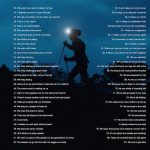by Kapil Sethi
It’s quieter nowadays. Rows of boys and girls on their desks and little cubicles working and talking in low voices.
A sullen air of seriousness and monotony hangs heavy over creative advertising agencies in the digital age.
Finally, the brash, sophomoric and edgy partners of their staid, plodding clients have been cut down to size, shown the error of their ways and brought to heel.
They now know that in a world where the impact of creativity is measurable, there is not a lot of need for creativity at all.
A perfect storm of the Facebook carousel, click bait, shares and likes, conversion funnels, AB testing and real time bidding in programmatic have conspired to create a dream environment for every risk averse marketer and quantitative researcher, while leaving the advertising creative ecosystem in tears.
The ability to measure some of the impact of communication is actually a very important step forward for creative, inasmuch as it should put pressure to create ideas that actually work in the online marketplace.
In the early days of digital though, the migration to digital platforms has meant a migration to a constant sales promotion mentality.
Luxury brands being an exception, in almost every category where communication is vital to sales like retail banking or telecoms, the majority of marketers have used it to play increasingly safe and as a bonus, reduce their reliance on advertising advice as well as its cost.
Digital channel owners, marketers and media planners have all bought into the idea that this is somehow the age of the deal. Consumers will no longer buy anything online merely on the back of some namby-pamby brand idea, or old school stuff like empathy and emotional affinity.
In the short term, they have proven to be right as all the metrics showed that with lower advertising costs on digital as compared to traditional media, marketers are reaping a higher ROI as consumers have lapped up the deals on offer.
When the deal is supreme, what is the value of an idea? Suddenly, media planners are writing ads, production houses are writing and directing their own ad campaigns, and marketers have not an iota of embarrassment in dictating every piece of advertising from their brands if they so desire.
Creative agencies, with their margins under serious attack from clients openly questioning their value have rapidly sobered up. The first to go is the culture of non-conformity. The belief that the best ideas thrive in an environment that questions the status quo has no place when ideas themselves are losing their importance.
Fun has been replaced with discipline, partnering clients has become agreeing with clients, juniors are replacing seniors, cheaper is replacing better and a general air of doom is prevalent. You’d have to be an idiot or at the least not the brightest to want a career in advertising creative today.
Seemingly paradoxically though, where creative is really buzzing is in the business of content creation. The same marketers who hold a whip to advertising creativity are the ones in thrall of the viral You Tube video.
It becomes less paradoxical when you realise that for them a viral video is a low cost, low risk shortcut to impressive measurable metrics. The impact on the brand is largely irrelevant.
However, despite the title of this article, it’s not yet time for eulogies. In actual fact, high quality creative ideation is even more at the heart of marketing today than it ever was.
Firstly, the fundamental marketing task of relevant differentiation has not gone away just because digital channels have appeared. When everyone is saying the same thing, saying it cheaper or counting abstract metrics does not help push sales as marketers in the last couple of years are beginning to realise.
By commoditising their brands to products in an era of parity, marketers are losing loyalty and new players are realizing that customers walk away as soon as the offers stop.
Secondly, while pre-communication metrics like audience size, propensity to buy etc. can be measured and so can post-communication metrics like conversion rates, it’s still as hard as ever to measure what constitutes great advertising, or a viral video.
In other words, we can know what our audience is like and what they will probably like, and we can know after the fact whether they like it or not, but that does not help in coming up with an idea that actually works.
The real alchemy is still in coming up with the right idea, expressed right that leads to desired outcomes. Outcomes for both the product and the brand, in the short and in the long term.
As the ROI on vanilla online promos decreases, the real demand in the next few years is going to be for creative thinking that can create differentiation in an extremely complex and fast changing channel, consumer and competitive environment that is measurable.
Thinking that can internalize everything and conjure up what works in the moment.
Essentially nothing has really changed, it all just got more complex and accountability is not going away. The agency response needs to be able to deliver success in this environment.
Much like business consulting structures, smaller, more nimble interdisciplinary teams learning from each other with much higher quality expertise are needed.
Increasingly there is a division between those who see communication as a soft or a hard business. And hard seemed to be winning until recently.
In reality, advertising will never be either merely science or art, and the time has come for achieving a true balance between the two, and acknowledging the importance of both.
Use contextual data to inform creative, and use effective creative to achieve success.
It may look difficult today, but the bottom has always been a great place to start.

Kapil works on the margins of KL’s marketing and advertising industries. He can be reached at [email protected]
This article first appeared in MARKETING Magazine Issue #234
MARKETING Magazine is not responsible for the content of external sites.









